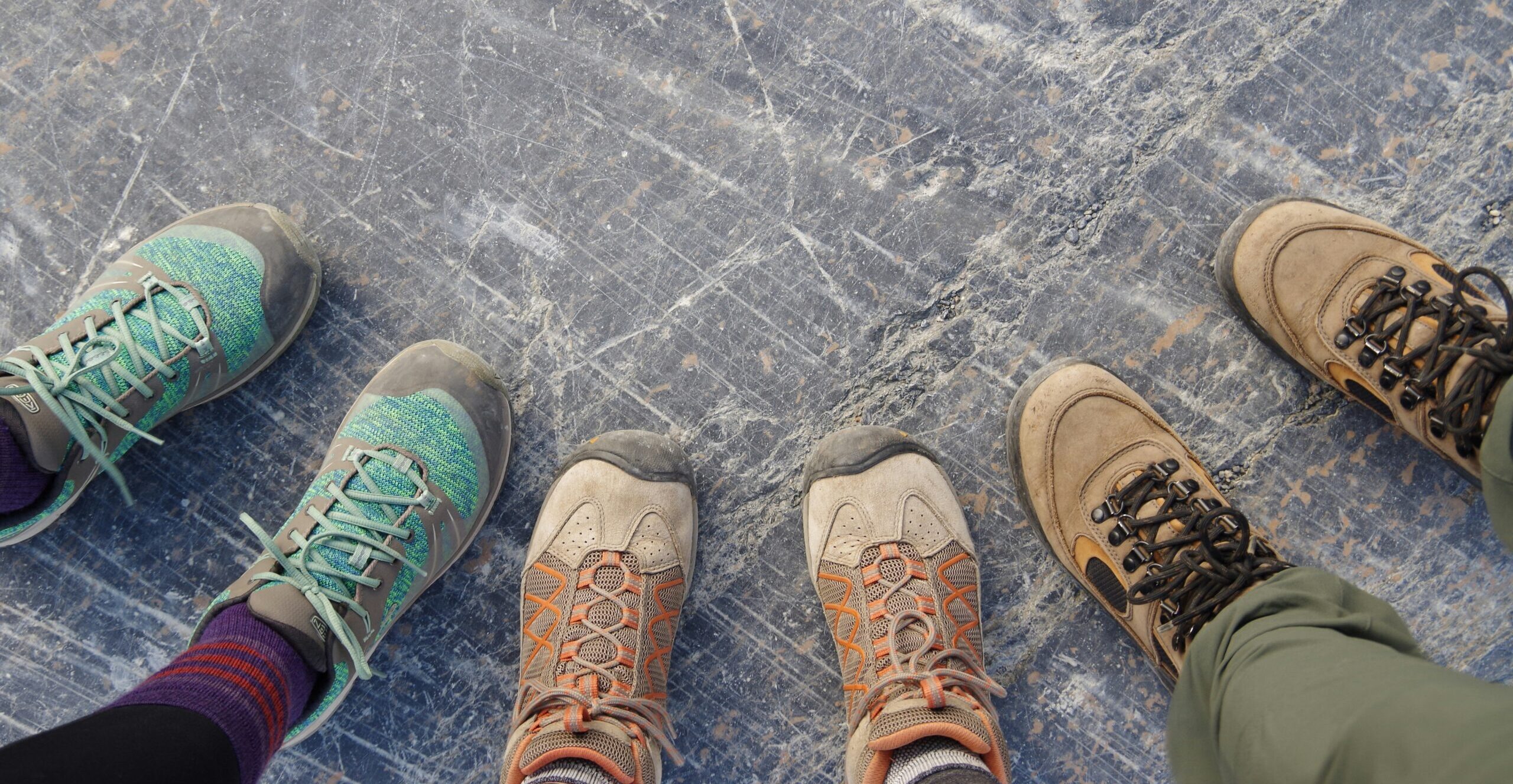<script type="text/javascript" src="http://classic.avantlink.com/affiliate_app_confirm.php?mode=js&authResponse=c4e13e1b9b5acdedad16d533a16f7bf0c234d607"></script>
<script type="text/javascript" src="http://classic.avantlink.com/affiliate_app_confirm.php?mode=js&authResponse=c4e13e1b9b5acdedad16d533a16f7bf0c234d607"></script>

Choosing the right hiking boots is crucial for comfort, stability, and injury prevention on the trail. Whether you’re hiking on rocky mountain paths, muddy forest trails, or dry desert terrain, the right boots will keep your feet supported and protected.
In this guide, we’ll walk you through key factors to consider when choosing hiking boots, including terrain type, boot materials, waterproofing, fit, and sole design. If you’re looking for expert recommendations, check out our Best Hiking Boots of 2025 guide.
Different terrains require different boot features to ensure maximum comfort and stability.
🔹 Pro Tip: Always consider the weight of your pack—heavier loads require sturdier boots with ankle support.
✔ Lightweight and flexible.
✔ Ideal for short hikes and easy terrain.
✔ Not suitable for carrying heavy loads.
✔ Provides ankle support for moderate terrain.
✔ Great for longer hikes and mixed conditions.
✔ Balanced between comfort and durability.
✔ Maximum ankle support and stability.
✔ Designed for rough, rocky, and uneven terrain.
✔ Best for multi-day treks with a heavy pack.
🔹 Best for Beginners: Mid-cut boots for all-around use.
🔹 Best for Heavy Backpacking: High-cut boots for added support.
🔹 Best for Wet Conditions: Leather boots with waterproofing.
🔹 Best for Hot Weather: Breathable synthetic boots.
🔹 Best for Year-Round Hiking: Waterproof boots with breathable lining.
🔹 Best for Desert & Dry Trails: Non-waterproof boots with mesh panels.
✔ Snug but not too tight (no pinching or pressure points).
✔ Enough toe room (to prevent toenail damage on descents).
✔ No heel slippage (reduces blisters).
✔ Try them on with hiking socks for a real fit test.
New boots require time to mold to your feet:
🔹 Pro Tip: Test your boots at the end of the day when feet are slightly swollen—this mimics trail conditions.
🚫 Mistake #1: Choosing the wrong boots for the terrain.
✅ Solution: Match your boots to trail conditions (rocky, wet, desert, etc.).
🚫 Mistake #2: Ignoring fit and skipping the break-in period.
✅ Solution: Always test boots with hiking socks and break them in before a long hike.
🚫 Mistake #3: Assuming waterproof boots are always better.
✅ Solution: Choose waterproof only if needed—they’re less breathable in hot climates.
If you’re looking for the best hiking boots this year, check out our Best Hiking Boots of 2025 guide for expert recommendations.
❓ What is the best hiking boot for rocky terrain?
👉 A high-cut boot with ankle support and stiff soles is best for rocky trails.
❓ Should I buy waterproof hiking boots?
👉 Only if you hike in wet conditions. If you mostly hike in dry, hot weather, breathable mesh boots are better.
❓ How long does it take to break in hiking boots?
👉 1-3 weeks, depending on the materials. Leather boots take longer than synthetic ones.
Choosing the right hiking boots is essential for comfort, safety, and performance on the trail. Whether you’re tackling rocky mountain paths, muddy trails, or dry deserts, the right boots make all the difference.
👉 Looking for the best hiking boots of the year? Check out our full Best Hiking Boots of 2025 guide for expert recommendations!